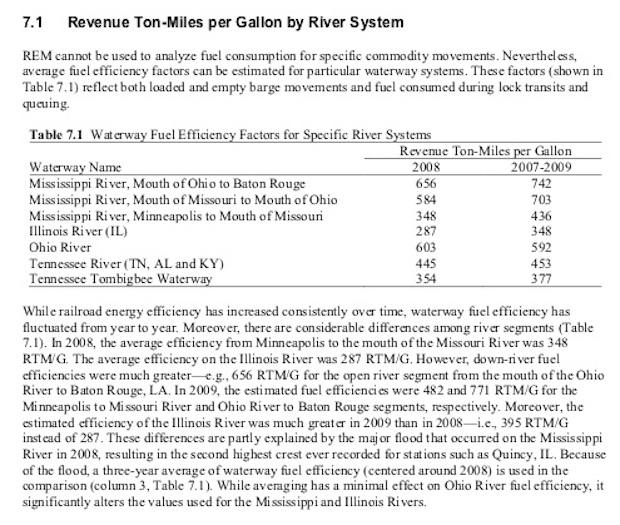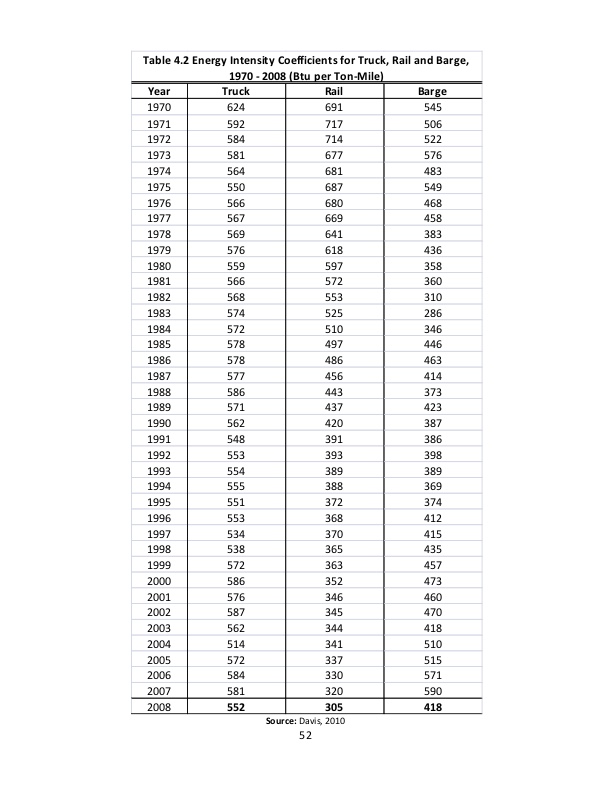Columbia River System Operations
Comment & Response
of bluefish.org
Cover Letter
----------------------------
Conservation
Coal
Carbon Sequestration
----------------------------
Irrigation
Barging Wheat
Barging Salmon and Steelhead
----------------------------
Survival of Salmon and Steelhead
Juvenile Survival through Hydrosystem
Water Temperature
Predation by Birds
Ocean Conditions
----------------------------
Greenhouse Gases
An Adequate Power Supply
An Economic Power Supply
A Reliable Power Supply
An Efficient Power Supply
----------------------------
Potatoes, Apples & Grapes
Petroleum to Pasco
----------------------------
Orca and Idaho's Chinook
Flex Spill to 125% TDG
Breach Lower Snake River Embankments
----------------------------
Social Effects
Cultural Resources
Environmental Justice
----------------------------
Conclusion
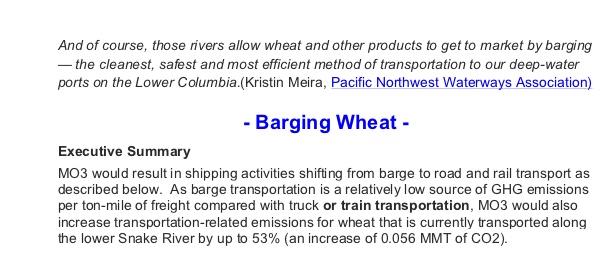
Federal Response:
The statement in the comment that emissions from shipping would increase under MO3 by up to 53 percent is consistent with the findings of the EIS (see Section 3.8.3.5 in the Draft EIS).Hilarious -- bluefish counter response:
Good that CRSO respondents agree with a direct excerpt from the CRSO Draft. The intended point, however, is that 0.056 MMT of CO2 is a small amount of emissions to be talking about, and miniscule in relation to the 4,000 MMT of CO2 equivalent that the U.S. power system emits annually.Not only is it silly to be discussing this trivial point in an $80 million NEPA document, but the pains made to argue an environmental benefit to shipping wheat by barge rather than by train, borders on malfeasance.
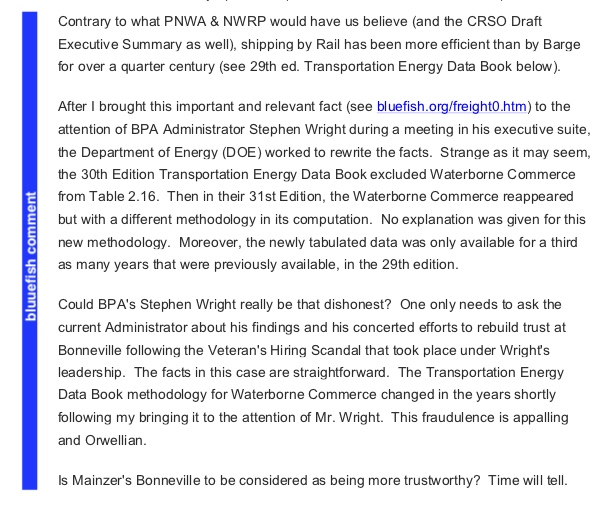
Federal Response:
The EIS finds that barge freight transportation is more efficient (i.e., has a lower energy intensity) per ton-mile than trucks or rail (see Section 3.8.2.2, Transportation Sector Greenhouse Gas Emissions in the Draft EIS). The most recent version of the Transportation Energy Data Book, cited by the comment, is consistent with this finding and with respect to the emissions factors used in the EIS.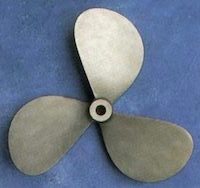
Bull-headed -- bluefish counter response:
To reiterate my comment's argument, shipping wheat by rail is more energy efficient than by barge.Let's consider the physics:
- Slippage:
- Train - Rotary motion of the motor is converted directly into rotary motion of the wheels. A steel wheel on a steel rail experiences almost no slippage, aside from turns and sudden braking.
- Barge - Rotary motion of a propeller applies a propulsive force, but water slips out sideways and not all energy is transferred to forward motion of the ship.
- Resistance:
- Train - Air resistance confronts the front of the train and some drag forces apply to the train overall.
- Barge - Water's resistance to the motion of a ship, "hull resistance", is composed of frictional resistance and wave making resistance. Some of this otherwise lost energy, however, can be recaptured when the ship's speed matches the wave pattern that it creates: The ship's bow and stern ride at the crest of the ship's wave, helping to propel the barge forward.
- Gravity
- Train - Modern locomotives are hybrid electric, and some braking energy is captured to charge the battery for later use (e.g. as the train travels back uphill).
- Barge - On an open river system, river current aids the downstream movement of a loaded barge, and the hull drag is somewhat of a benefit. Conversely, when the unloaded barge heads upstream, the higher riding hull experiences less drag and frictional loss.
On the slackwater Lower Snake River (LSR), the upstream movement is not much more energy intensive than downstream movement. Meanwhile, the gravitational energy of the navigable waterway is harnessed for hydropower production. Importantly, an estimated $1 million in electricity value is lost annually due to lockages that lift and lower vessels travelling the Columbia/Snake waterway.
Comparing Rail Fuel Efficiency with Truck and Waterway
Appendix G, Energy Intensity Comparisons for Water, Rail and Highway
by Denver Tolliver, Pan Liu & Douglas Benson, North Dakota State University, May 2013

The data presented by North Dakota State University (Tables above), validates the discussion of the physics.
Unit trains on the Central route (Table 8.4 above), have the best fuel efficiency, estimated to be 748 Revenue Ton Miles per Gallon of fuel (RTM/G). This is far better fuel efficiency than waterway transportation on any of the various river systems of Table 7.1. The West route matches the mountain climb out of Seattle, while the Central route closely matches the relatively flat rail line along the LSR to Pasco and Columbia River to Portland.
Transporting by rail is more energy efficient
than by barge on Columbia/Snake waterway.

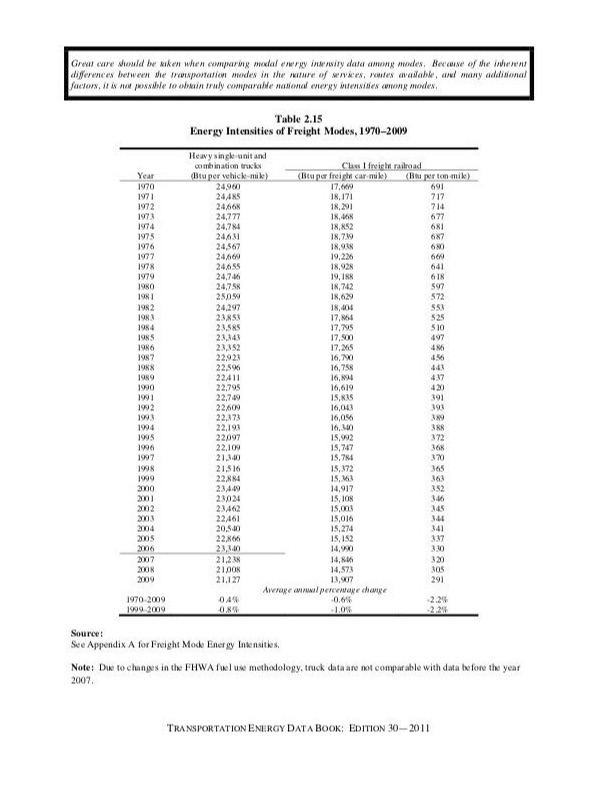
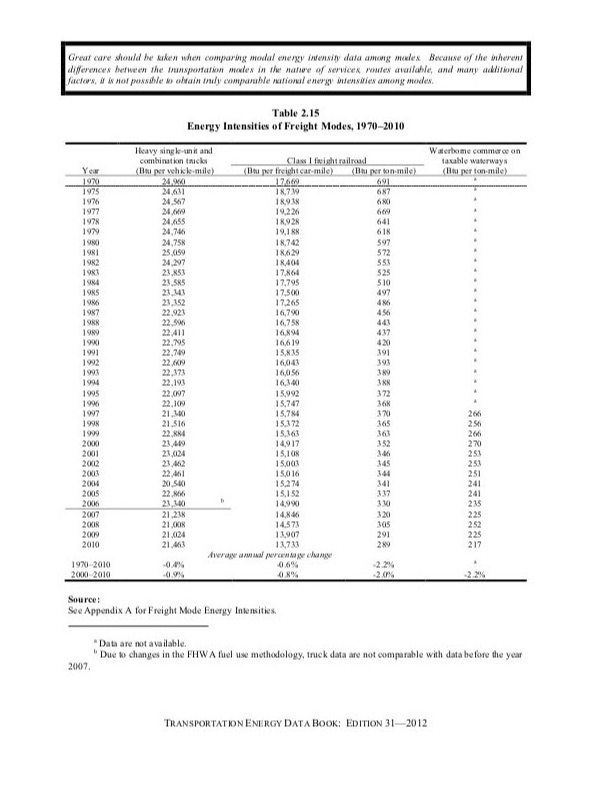
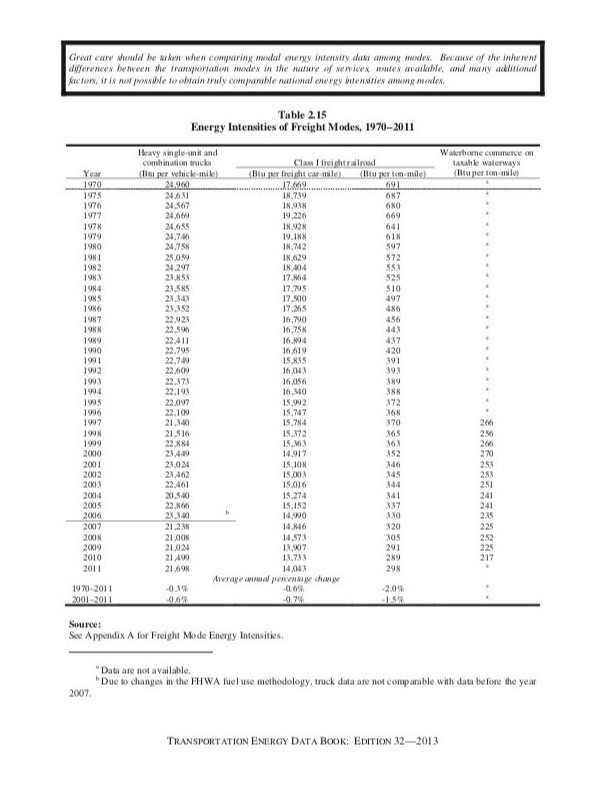

Federal Response:
Dr. Casavant of Washington State University, referenced in this comment, was an advisor and analyst for the navigation and transportation analysis in the CRSO EIS. Thus, this Section is consistent with Dr. Casavant's research and models. The EIS considers all relevant literature on the topic of the efficiency of shipping modes, as opposed to relying solely on information from the PNWA as stated in this comment. The EIS relies on current, high quality information and applies current models and data rather than relying on findings from previous studies.
Decoy -- bluefish counter response:
Since Dr. Casavant was on the payroll, whatever the boss says is what sticks, regardless of Dr. Casavant publishing to the contrary."... use of rail, which is more energy efficent than barge or truck, ..."
-- Ken Casavant, Director of Freight Policy Transportation InstitueUS Dept. of Transportation: Economic and Environmental Impact of the Columbia-Snake River Extended Lock Outage (page 59)
US Dept. of Transportation: Economic and Environmental Impact of the Columbia-Snake River Extended Lock Outage (page 52)
